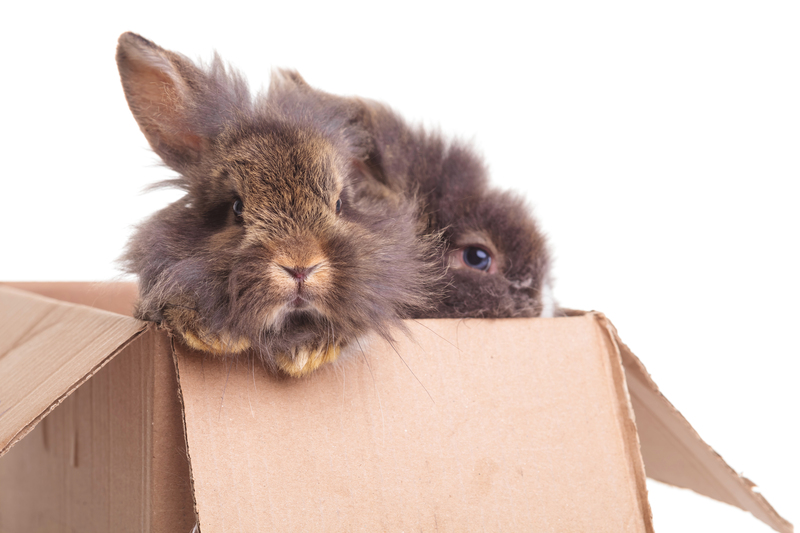Keep Your Sofa Pristine: Expert Tips for Long-Term Storage
Posted on 01/06/2025
Keep Your Sofa Pristine: Expert Tips for Long-Term Storage
Storing a sofa for an extended period can be a challenging task, whether you're moving, renovating your home, or simply trying to save space. Sofas are often significant investments, both financially and emotionally. Therefore, preserving your couch in excellent condition during long-term storage is vital. In this comprehensive guide, we'll share expert tips to keep your sofa pristine during storage, ensure its longevity, and avoid the common pitfalls that can lead to damage or degradation.
Why Proper Sofa Storage Matters
Sofas are susceptible to a variety of issues when improperly stored. Moisture, pests, dust, fading, and physical damage are just a few of the hazards your beloved seating may face. By following expert sofa storage advice, you can significantly extend the life of your furniture and maintain its value--financial and sentimental. The ideal storage method protects both the sofa's structural integrity and appearance.

Preparing Your Sofa for Storage: The Essential Steps
1. Clean Thoroughly Before Storage
- Vacuum all surfaces, removing crumbs, pet hair, and dust. Pay close attention to crevices between cushions and under seat pads.
- For fabric sofas, use an appropriate fabric cleaner. For leather sofas, opt for a high-quality leather conditioner and cleaner.
- Allow sufficient time for the sofa to dry completely to prevent mold and mildew growth during storage.
Tip: Never store a damp sofa! Even trace amounts of moisture can cause major damage over time.
2. Disassemble When Possible
- Remove any detachable legs, arms, cushions, or modular components. This makes transportation easier and minimizes stress on connecting joints.
- Carefully wrap and label each part for easy reassembly later.
3. Protect with Quality Covers
- Invest in breathable furniture covers or pads rather than plastic, which can trap moisture and promote mold growth.
- Wrap leather sofas with blankets or natural-fiber covers to allow for slight air circulation while protecting from dust.
- Secure covers with straps, but avoid overtightening, which could compress the fabric or padding.
Expert Insight: Avoid colored sheets, as dye transfer can stain your upholstery over extended periods.
Choosing the Right Storage Unit for Sofas
1. Opt for Climate-Controlled Storage
- Temperature swings and humidity can wreak havoc on both wood and upholstery. Climate-controlled self-storage units maintain stable temperature and humidity, reducing the risk of mold, mildew, and cracking.
This is especially crucial for leather sofas or high-end couches with solid wood frames prone to warping or drying out.
2. Ensure Adequate Space
- Choose a unit large enough to store your sofa horizontally, avoiding the need to stand it on end, which can put undue pressure on the frame or upholstery.
- Leave enough room for airflow around the sofa and to avoid compressing the cushions.
3. Pest-Proof Your Unit
- Inspect unit for existing signs of pests before deciding. Mice, insects, and rodents are attracted to natural fibers and can nest in your sofa.
- Use natural pest deterrents like cedar blocks or lavender sachets, but avoid strong-smelling chemicals that could permeate the upholstery.
How to Store Your Sofa in a Storage Unit
1. Elevate Off the Floor
- Place your sofa on wooden pallets or boards to avoid direct contact with the floor, which could be cold or susceptible to flooding.
- This allows air circulation underneath the sofa, reducing the risk of mildew and moisture absorption.
2. Avoid Tight Packing
- Ensure that other items in the storage unit aren't stacked directly on or tightly alongside the sofa.
- Do not pile boxes or heavy items on top of the sofa--this can deform cushions and damage frames over time.
3. Schedule Regular Checkups
- If possible, visit your storage unit every couple of months. Look for signs of moisture, pest activity, or sagging covers.
- Air out the storage unit periodically to keep humidity levels low and discourage mold.
Expert Tips for Storing Different Sofa Types
Fabric Sofas
- Vacuum and spot-clean thoroughly prior to storing. Use fabric-safe sprays to prevent mildew.
- Cover with a breathable cotton sheet to allow airflow while shielding from dust.
Leather Sofas
- Clean and treat with leather conditioner before covering.
- Never wrap leather in plastic, as this can lock in moisture and cause cracking or mold growth.
- Apply a second layer of cover if storing in a non-climate-controlled area, to further insulate against cold and humidity.
Sectional or Modular Sofas
- Disassemble as much as possible, label each component, and store pieces side by side instead of stacking.
- Wrap each section individually to prevent scratches or scuffing during storage or transport.
Common Sofa Storage Mistakes to Avoid
- Storing a dirty or damp sofa: Trapped moisture will nearly always result in mold, mildew, and unpleasant odors.
- Poor wrapping material: Never use non-breathable plastic wrap for prolonged storage unless the sofa is in a climate-controlled, dry environment.
- Forgetting pest control: Even a spotless storage unit can become a magnet for bugs or rodents if left unchecked.
- Leaning or standing upright: Prolonged pressure on the arms or one side will warp the structure and compress stuffing.
Moving Your Sofa Into and Out of Storage
1. Use Proper Equipment
- Employ dollies, moving blankets, and furniture sliders to avoid dragging the sofa, which could tear upholstery or damage legs.
- Never lift by the arms, as this can strain the attachment points and lead to cracking or wobbly frames.
2. Protect During Transit
- Secure your sofa in the moving vehicle with straps, but place padding between sofa and straps to prevent pressure marks.
- Place a tarp or drop cloth on the ground to keep the sofa off dirty or rough surfaces during transfer.
3. Allow Sofa to Acclimatize
- After removing your sofa from storage, let it sit uncovered in a well-ventilated area for a day before using or covering with slipcovers.
- For leather sofas, apply an extra coat of conditioner to restore suppleness after long storage.
Long-Term Sofa Storage Checklist
- Clean: Vacuum, spot clean, and dry thoroughly.
- Disassemble: Remove detachable parts.
- Wrap: Use breathable covers or blankets.
- Elevate: Place on pallets or boards.
- Pest-proof: Add pest repellents, check unit.
- Climate Control: Prefer climate-controlled units, especially for leather and wood.
- Check Regularly: Inspect every few months for early signs of issues.
Additional Tips for Keeping Your Sofa Pristine During Storage
- Record sofa conditions with photos before and after storage--useful for insurance and your own peace of mind.
- Add moisture absorbers, such as silica gel packets, inside covers to further reduce humidity.
- Avoid placing your sofa near the storage unit door, where temperatures and humidity tend to fluctuate the most.
- If you must store items inside the sofa (such as bedding in a sofabed), make sure all items are clean and dry, and do not overstuff.

Frequently Asked Questions About Sofa Storage
Can I store my sofa in a garage or basement?
It is generally not recommended unless your garage or basement is climate-controlled and moisture-free. Basements in particular are prone to high humidity and flooding, which can quickly ruin upholstery and wood.
How can I freshen a sofa after long-term storage?
Once removed, allow the sofa to air out. Vacuum all surfaces and, for fabric sofas, sprinkle baking soda before vacuuming again to absorb odors. For leather sofas, use a conditioner and wipe with a damp cloth.
Is it safe to store a sofa upright?
Storing your sofa vertically is not advised for long periods. This can cause permanent distortion in the cushions, shifts in internal padding, and unnecessary stress on the frame.
How do I protect my sofa from pests?
Make sure your storage unit is clean and inspected. Use natural repellents, avoid storing food or crumbs inside, and consider periodic checks with traps or monitoring products.
Conclusion: Preserve Your Sofa's Beauty and Value
Storing your sofa long-term doesn't have to be daunting or risky. By choosing the right storage unit, preparing your sofa with care, and applying a few expert techniques, you can keep your couch pristine for months or even years. Protect your investment, maintain its comfort, and ensure your furniture is ready to offer style and relaxation whenever you need it again.
Remember: clean, dry, covered, elevated, and monitored sofas are the keys to successful long-term storage. Use these tips to safeguard your sofa and keep it looking--and feeling--its very best.
```


